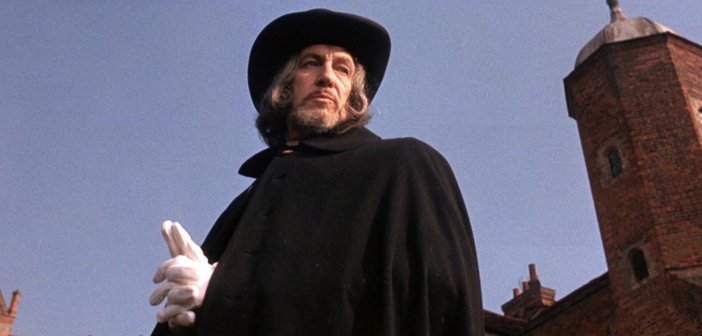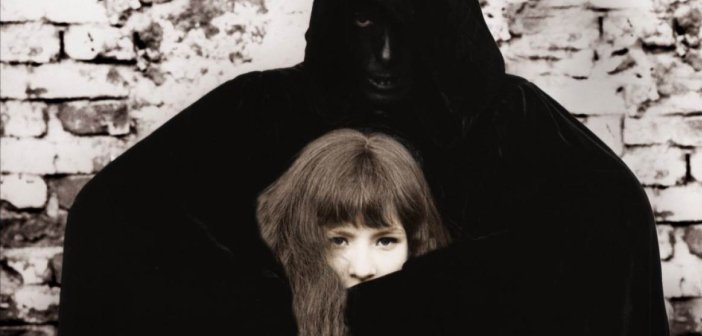Folk Horror Season at the IFI | A Brief History of the Cult Sub-Genre
Folk horror is one of the strangest and most persistent cult sub-genres of the 21st century. Though a somewhat broad term which is often freely applied, the cult derives its primary impetus from a cycle of uncanny pastoral horror films produced in Britain in the late 60s and early 70s, united by a common thematic focus on eerie landscapes and the clash between a resurgent paganism and Christianity and/or modernity.
Like northern soul, folk horror is a slippery curator’s label coined somewhat after the fact. The first prominent usage of the term seems to have been by the actor and writer Mark Gatiss in the second instalment of his 2010 documentary series A History of Horror. Gatniss identified a short-lived sub-genre of British horror characterised by a close relationship with landscape, history and folklore, highlighting three films which have since become central to the folk horror cannon: Michael Reeves’ Witchfinder General (1968), Piers Haggard’s The Blood on Satan’s Claw (1970), and Robin Hardy’s The Wicker Man (1973).

Starting around 2006, Hauntology was a critical movement or convenient catch-all label applied to the sense that contemporary culture was totally absorbed by the past. The central motif of hauntology was an image of the cultural past as a ghost or revenant haunting the present-tense. Whether viewed as a good thing or no, 21st century culture was largely left to creatively re-imagine the past in a kind of seance or raising of spirits from the ether of childhood memory and the glamour of obsolete technologies. With a marked obsession for the weird artefacts of 70s popular culture, hauntology was a huge spur to the budding folk horror revival.
Folk horror broadened out from its roots in 70s exploitation cinema to incorporate the brooding young adult novels of Alan Garner (The Owl Service), the mind-bending BBC science fiction serials of Nigel Kneale (Quatermass and the Pit), a variety of scarifying children’s TV shows with weird neo-pagan elements (Children of the Stones), and much more besides. Both hauntology and folk horror looked back to a lost cultural moment when exploitation cinema and afternoon television provided an unlikely forum for the return of a haunted, visionary, Blakean Britain long lost to the Industrial age. The stone circle and the electrical pylon – icons dear to the hearts of both sub-cultures – capture this strange cross-over between the distant past and the age of mass media, the ghost and the electrical signal.

Hauntology doesn’t seem to be invoked as often today (it never exactly rolled off the tongue to begin with), but the fascination with folk horror shows no sign of abating. Latter day varieties of the genre include Ben Wheatley’s Kill List (2011) and A Field in England (2013), and Robert Eggers’ more recent The Witch. The first and vastly more popular season of True Detective was drenched in folk horror. The acting pyrotechnics of its thinking man’s Lethal Weapon double-act notwithstanding, the folk horror elements were a huge part what drew audiences so obsessively into the show. Even Danish master stylist and provocateur Nicolas Winding Refn seems to want in on the action, having announced a desire to remake Witchfinder General.
Precisely why we are so fascinated by folk horror at this particular juncture of the 21st century would require another article, or perhaps the insights of future sociologists. We can more confidently contextualise the first folk horror wave as a complex set of responses to the Aquarian upheavals of the 60s counter-culture. Published in two volumes in 1890, Sir James Frazer’s The Golden Bough: A Study in Magic and Religion was one of the first major anthropological studies of pagan mythology and ritual. Intended by its author to view these beliefs from a detached, scientific vantage point, in the long term the book had the opposite effect: The Golden Bough intoxicated the imaginations of its readers, and initiated a modern fascination with the archaic energies of the fertility cult which remains with us to this day. If The Golden Bough titillated the modernist poets of the 20s, by the 1960s a revival of romanticised paganism and occult beliefs had become an integral part of a mass youth revolt against industrialised modernity.

With this in mind, we can see the struggle between the puritanical Protestant Sergeant Howie (Edward Woodward) and the neo-pagan islanders in The Wicker Man as a reflection of the clash between traditional, conservative British values and the free-love Saturnalia of the 60s. Although the Summerisle cult are essentially the villain of the piece, much of The Wicker Man‘s energies – if not its sympathies – clearly lie in the surreal pageantry of the Old Ways, rather than the joyless severity of the frigid authority figure. In The Blood on Satan’s Claw, in contrast, we find a much less ambiguous depiction of the clash between conservative authority and youthful insurrection. Sharing its 17th century setting with Witchfinder, Claw depicts a village which becomes imperilled when an orgiastic youth cult gathers around the hypnotic figure of Angel Blake (Linda Hayden). A disturbing vision of counter-cultural, Dionysian energies run amok, Claw has many resonances to the Manson Family saga which was unfolding in a Californian courtroom the same year the film was released.
Whatever the underlying resonance of folk horror to our current zeitgeist, the Irish Film Institute is doing us all a favour this July. Running from the 16th to the 30th, Haunted Landscapes is a beautiful programme which allows long-time devotees to renew their vows, and offers neophytes a full immersion in the folk horror cauldron. Alongside the Big Three, the season will be screening a variety of gems: Hammer’s irresistible, gorgeously photographed Satanic schlock The Devil Rides Out (1968); the same studio’s fine 1967 adaptation of Nigel Kneale’s heretical and still hugely influential sci-fi/horror hybrid Quatermass and the Pit; Jacques Tourneur’s masterful and atmospheric Night of the Demon (1957); as well as bringing the folk horror current across the Atlantic and all the way to 1999 with The Blair Witch Project. The highlight of the programme for me is the July 20th 35mm screening of Jaromil Jires’ Valerie and her Week of Wonders. A classic of the Czech New Wave and precursor to the fairy tale treatment of sexual awakening in the works of Angela Carter, Valerie captures the cinema as its most dreamlike and enraptured.

The key idea underlying folk horror is that the Old Ways have never fully gone away. Despite being driven underground by Christianity and modernity, there remains somewhere – in hidden places in fields and forests, in secluded villages with sleepy outward veneers – vestiges of an archaic covenant between man and the forces of nature. The Old Ways are always coming back. In the 1960s, the idea of the return of the archaic was welcomed as a part of a large-scale rejection of the values of technocratic modernity. In the horror movies of the period, the resurgence of the pagan past is alternatively alluring and terrifying, reflecting complex, ambiguous attitudes towards the haunted, pastoral past and the urbanised present. Today, as we become ever more wedded to technology, and ever more uncertain about about the consequences of that marriage, folk horror continues to exert its heady mixture of fear and fascination.
Find out more about the IFI’s Folk Horror Season here,
Featured Image Credit

